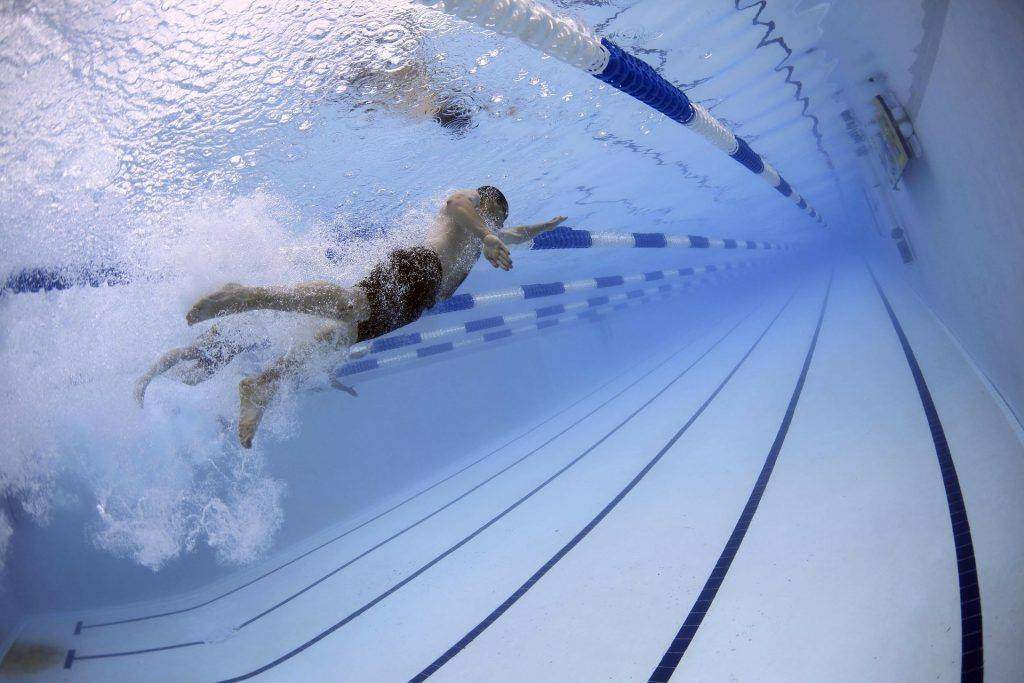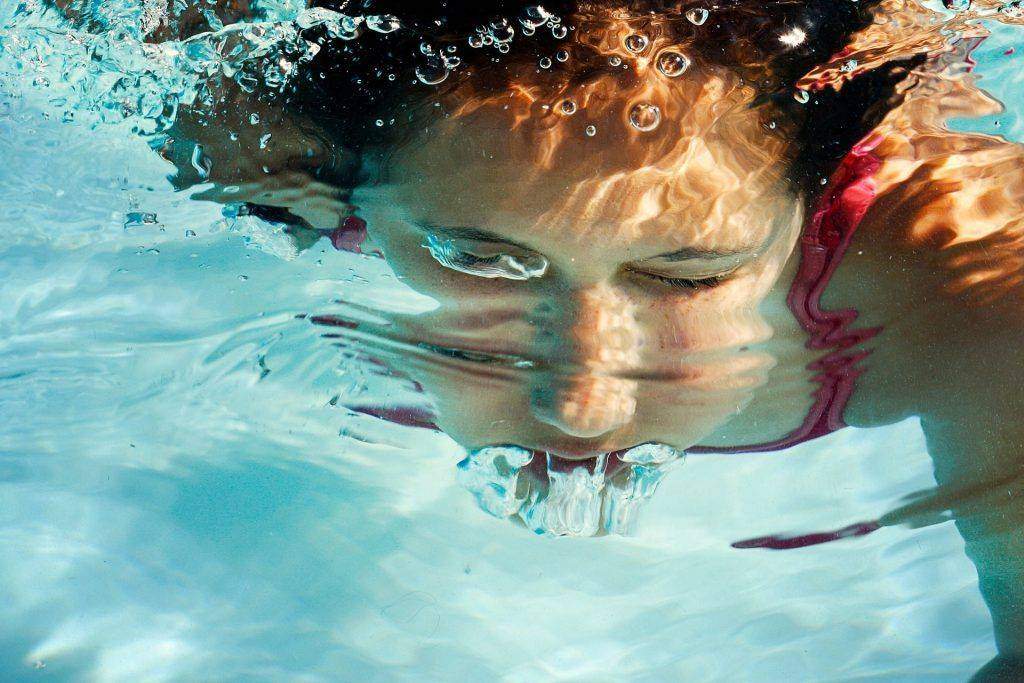
Don’t you feel good after finishing a long session of swimming? You have toned your muscles, strengthened your bones, and torched some calories. You have worked your way to improved well-being. Also, you are now more confident about your appearance. Everything feels great – except for your upset and gassy stomach after swimming.
If you experience bloating, belching, farting, and stomach pains following a long swim, you are not alone. The gassy and uncomfortable sensation is commonly caused by aerophagia, the act of ingesting air while swimming. Although passing gas is a normal function of the digestive system, there are various factors that cause you to ingest extra air when swimming, including your diet and swimming techniques.
Causes of Bloating
There are many reasons you might feel uncomfortable or bloated, from common to serious. If you experience bloating often, you can simply get over this once you know its cause.
Gas: Some foods cause your gastrointestinal tract to release more gas than others. They include high-sulfur vegetables like asparagus, brussels sprouts, and broccoli. Swallowing air is another common reason.
Heavy Meals: Depending on when you eat, you could go many hours between meals, increasing your hunger and causing you to eat more than you require, which can lead you to produce more gas than usual.
Menstruation: During your periods, the changes in hormones can cause bloating.
Lack of fibre: If you do not get enough fibre, it could cause food to travel inefficiently through your digestive system.
A Sedentary lifestyle: Sitting for a long time can also cause the contents of your abdomen (including your intestinal tract) to compress, slowing digestion.
Stress: When you’re stressed, your body slows down digestion, causing pain, bloating, and indigestion.
Other medical issues: Bloating can also be a symptom of more serious issues, like irritable bowel syndrome (IBS).
Avoid gas or reflux-promoting fare before you swim, like greasy foods, caffeine, high- fibre foods (e.g., beans, broccoli, apples, asparagus, cauliflower, cabbage, fructose), which slow bowel motility. For those who are sensitive, steer clear of lactose-containing foods like cheese, yoghurt, and milk. Individuals with GERD should also avoid reflux or acidic-producing foods. In addition to the aforementioned caffeine and greasy foods, these include chocolate, citrus fruits, mints and spicy foods. A small FODMAP (Fermentable Oligo- Di- Monosaccharides and Polyols) diet may help decrease symptoms of bloating and abdominal pain as well.
Foods You Should Never Eat Before You Swim
If you enjoy swimming as a leisure activity during the summer, then you must avoid a list of foods before swimming. Certain foods can impact your performance and overall experience in the water. Take a look.
1. Ice cream
Intake of high-fat-containing foods before taking a swim can lead to discomfort or indigestion, and ice cream is a major culprit.
2. Spicy foods
Since your body is often in a horizontal position when you’re swimming, spicy food can cause acid reflux which can become an issue. Steer clear of hot sauces and peppers before you take a dip to decrease the chances of discomfort.
3. Fruit juice & soda
Hydrate with water or sports drinks instead of fruit juices and sugary sodas, which can cause bloating and cramping. The content of these beverages puts pressure on the outer layer of your abdominal wall, which can put a damper on any swimming excursion. So, be very careful about what you’re drinking and eating.
4. Beans
Beans and legumes like lentils and split peas have tons of fibre, which is great for your health, but not ideal when it comes to feeling great in your swimsuit. If you eat a lot before swimming, you could experience bloating, constipation, and cramping—none of which will make you feel like splashing around much. So avoid other fibre-rich vegetables also such as broccoli.
5. Coffee
Many people say that caffeine gives them a burst of energy for swimming laps, but the negative effects outweigh the positives. Drinking energy drinks and coffee could cause you to experience diarrhoea or nausea in the water, plus there’s a good chance you’ll get dehydrated.
How to avoid Gassy Stomach After Swimming
If you love swimming yet you’d love to feel nothing but refreshed after a vigorous swim workout, ahead are six ways to reduce aerophagia.
1. Abstain from flatulence-causing foods
Aside from chewing gum and carbonated drinks which are notorious for ingesting too much gas in your gut, other healthy foods also trap excess gas, thus should also be avoided prior to hitting the pool. Foods such as milk and dairy products (lactose causes gas), starchy foods like pasta and potatoes, and fiber-rich foods like broccoli, cauliflower, wheat, and beans, are among those big offenders.

Processed foods with artificial sweeteners, greasy foods, chocolates, mints, and caffeinated drinks may also cause gas ingestion and result in increased reflux or belching, and discomfort.
2. Eat smaller food portions frequently
A myth says that you should keep an empty stomach prior to swimming. That’s not entirely true because you need fuel in order to swim effectively. However, it’s important to watch what you are eating and keep it light. Shifting your body from a vertical to a horizontal position while digesting food causes air to get trapped in the fluids of your stomach and propelled into the small intestine, which can result in pain and subsequent flatulence.
So instead of having huge servings, it’s suggested to have small, frequent meals before and after your swim training. You should also not swim right after eating. Time your small meals within two to three hours before wearing your swim cap and goggles and taking a plunge.
3. Chow down slowly
Next, to eating light, you should also take smaller bites and make sure to chew your food thoroughly to prevent air ingestion. You are likely to swallow too much air and cause flatulence if you eat too quickly and take bites like a hungry monster.
4. Calm down before you swim
When you’re nervous, you are likely to take larger gulps of air than normal, thus increasing the amount of air you ingest while swimming. Before jumping onto the water, try calming exercises like yoga, stretching, and taking slow deep breaths. Being calm helps you take natural, controlled breaths in the pool.
5. Pay attention to your breathing techniques

Similar to your pre-workout meals, you should also be aware of your breathing techniques and take smaller, more frequent breaths. No matter how rapidly or vigorously you swim, try not to take large gulps of air. Increasing your breathing rate allows you to prevent taking in more air than you need.
For instance, if you usually gasp a big amount of air on every third stroke while performing the front crawl, you may switch to taking smaller breaths with every other stroke. If you’re unsure, you may consult your swim coach about your breathing techniques in the water.
6. Breathe through your nose
Doing this whenever possible is one good way to control the flow of air and prevent ingesting it. In swimming, you should always be exhaling except when your head is above the water in order to inhale. While you could breathe either out of the nose or the mouth, breathing through the nose lessens the chances you’ll swallow air and water.
Start at a slower pace when practicing this technique. Keep your face in the water and allow a stream of bubbles to slowly release from your nostrils. Apply this to all different swim strokes. Gradually increase your speed once you’re comfortable with it.
Carmina Natividad is one of the writers for Swimprint, a go-to shop for swimming enthusiasts, specializing in swim caps in the UK. While she’s fascinated by writing articles focused on sport fashion, health, and wellness, she swears to never give up pizza.
7. Focus on fibre
Constipation or inconsistent bowel movements are a common cause of bloating. Aim to eat approximately 25 grams of fiber a day which will not only help keep things moving but also keep you full for longer. Fibre-rich foods include apples, berries, sweet potatoes, spinach, broccoli, chia seeds, flaxseeds and oatmeal, to name just a few!
8. Give Yourself an Abdominal Massage
Try massaging your abdomen if dietary changes do not help your bloating. Doing so can help move food along in your bowels, and reduce your discomfort.
Start from your right side near your pelvis and rub upwards in a circular motion until you reach your ribcage. Move in a straight line to your upper left side and move down to your left towards down. Once, they go upward towards your belly button. Then, repeat this for up to 10-15 minutes, always moving in a clockwise direction. Going counter-clockwise could make your problem worse.
Connection Between Swimming and Digestive Discomfort
In addition to bloating, swimming can also cause other digestive discomforts, such as indigestion and heartburn. These symptoms may happen due to the motion of the water, which can disrupt the normal flow of digestive acids and juices, leading to irritation and discomfort.
Swimming involves constant movement and changes in body positioning, which can cause the stomach acids to move in unexpected ways. This movement can lead to acid reflux, causing a burning sensation in the throat and chest. Swimmers who already have underlying digestive conditions, such as gastroesophageal reflux disease (GERD), may be more possibility to experience these discomforts.
Furthermore, dehydration can exacerbate digestive discomfort during swimming. When the body is dehydrated, the digestive system may not function optimally, leading to slower digestion and increased bloating. Swimmers need to stay hydrated before, during, and after their swimming sessions to minimize the risk of digestive discomfort.
Overall, while swimming offers numerous health benefits, swimmers need to be aware of the potential for bloating and digestive discomfort. By understanding the causes and taking preventive measures, swimmers can enjoy their water-based activities without the discomfort of bloating.
5-Minute Workouts to say goodbye to Bloating
Try our anti-bloat exercises to help promote circulation and blood flow and banish that will help you get rid of bloat. Let’s have a look at them:
Try it first: Cardio
Whether a nice bike ride, a long walk, a brisk jog, or even a jaunt on the elliptical, cardio will help deflate your bloat. Physical activity such as this will help reduce the gas that causes pain and help move digestion along.
Now start: Yoga poses
Torso Twist
The Torso Twist will help you increase blood circulation and flow — exactly what you require when your stomach feels like a pufferfish.
- Sit down on the mat with your arms at your sides and legs extended.
- Activating your core, bend at the knees, bring your legs up toward your chest, and balance on your tailbone. Bend your elbows and bring your arms in front of your chest, palms must touch each other.
- Make sure that your core is engaged and your neck and back remain straight, begin to rotate your upper body to the left, stopping when your right elbow crosses your knees.
- Back to the middle and repeat twisting to the right.
- Complete 2-3 sets of 10 reps.
Cat-Cow
The Cat-Cow pose will help with bloat and digestion. In this exercise, you’ll stretch and compress your intestines to help promote digestion.
- Begin on all fours with your knees directly under your hips and your hands directly under your shoulders. Your spine and neck should be neutral.
- Engaging your core, begin the upward phase of the movement: Exhale and push your spine toward the ceiling, allowing your back to round and your head to fall toward the floor in alignment with your spine. Hold for 10 seconds.
- Continuing to engage your core, move to the downward phase: Let your stomach fall toward the floor, arching your back to the opposite side. Keeping your neck neutral, get your shoulders together. Hold for 10 seconds.
- Repeat 3 times for 1 minute total.
Extended Triangle Pose
The good stretching in the Extended Triangle Pose will help reduce bloating.
- With your feet together, stand straight and your arms down by your sides.
- With your left foot, step back 3-4 feet, turning your left foot at a 90-degree angle and twisting your chest toward the left side.
- Keeping your legs extended, reach your right arm forward and your left arm backwards with your palms facing down.
- Hinging at the waist, put your right hand on the floor, keeping your chest open and your left arm extended.
- Bring your gaze to wherever it’s comfortable — up toward straight ahead or left arm. Hold this for 15 seconds, ensuring your breath is deep and conscious.
- Repeat with the other side.
Sphinx Pose
Sphinx Pose is similar to Cobra Pose, it will stretch your torso and thus your digestive organs, improving digestion.
- Begin by lying face down on a mat with your elbows bent and palms next to your chest.
- Bracing your core, press up slowly by extending through your spine. Keep your glutes relaxed and use your lower back while maintaining a neutral neck.
- Once you’ve reached a comfortable height, hold for a few seconds and lower back down to the starting position.
- Repeat 5 times.
Extended Puppy Pose
Eaten too much? Don’t worry, try a puppy yoga pose — it will make you feel relaxed and comfortable.
- Begin on all fours with your hands stacked below your shoulders and your knees stacked below your hips. Walk your hands a few inches forward and bend the top of your toes to the floor.
- Exhale and move your butt back while you drop your forehead to the floor and extend your arms with palms on the floor. Keep a slight bend in the back.
- Hold for 30 seconds to 1 minute.
Must track your diet and bloat response, as well as yoga and cardio moves, which will have you feeling back to yourself in no time!
If your bloating is persistent or causing extreme pain in your abdomen, even after you’ve tried doing exercise or changing your diet, consult with your doctor. While bloating is not a serious issue, it can also be an early sign of ovarian cancer in women. The key to knowing whether it’s common or serious is to get a screening. The results can help you to get rid of bloating.
When to Seek Medical Advice
Most of the time, bloating after swimming is temporary and can be resolved by doing some small efforts. However, there are instances where bloating may indicate a more serious underlying problem.
If bloating persists or is accompanied by severe pain, uncommon weight loss, changes in eating habits, or other concerning symptoms, it is important to consult a healthcare professional. These symptoms could indicate more serious digestive issues that need medical attention.
Recurrent or persistent bloating after swimming may be a symptom of serious issues such as gastrointestinal disorders or irritable bowel syndrome (IBS). If you experience frequent bloating, it is advisable to consult your doctor to determine the underlying cause and explore appropriate treatment options.
Conclusion
If you still experience pain, bloating, gas, or stomach aches after swimming, consult a medical professional for further evaluation. Stomach pain and bloating are common symptoms of functional gastrointestinal disorders such as irritable bowel syndrome, and can potentially be symptoms of more serious diseases. Chances are high that bloating and stomach pain with swimming are harmless and can be contained with these tweaks. However, medications can assist with the management of any underlying disorders (including GERD) when indicated, and registered sports dietitians are invaluable in identifying nutritional triggers and timing. So, be sure to reach out if symptoms are seemingly mysterious, frequent, or recalcitrant to simple fixes!